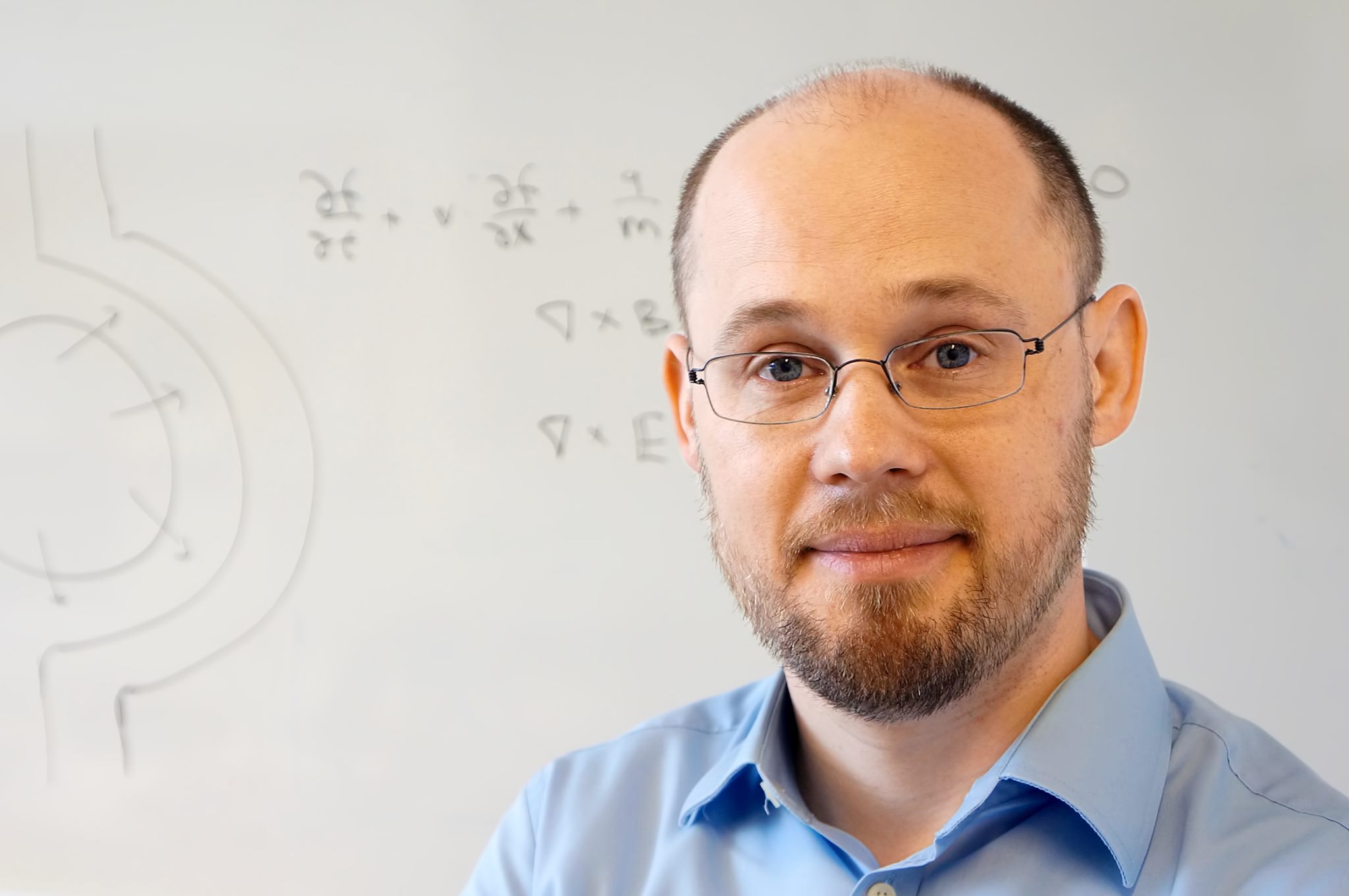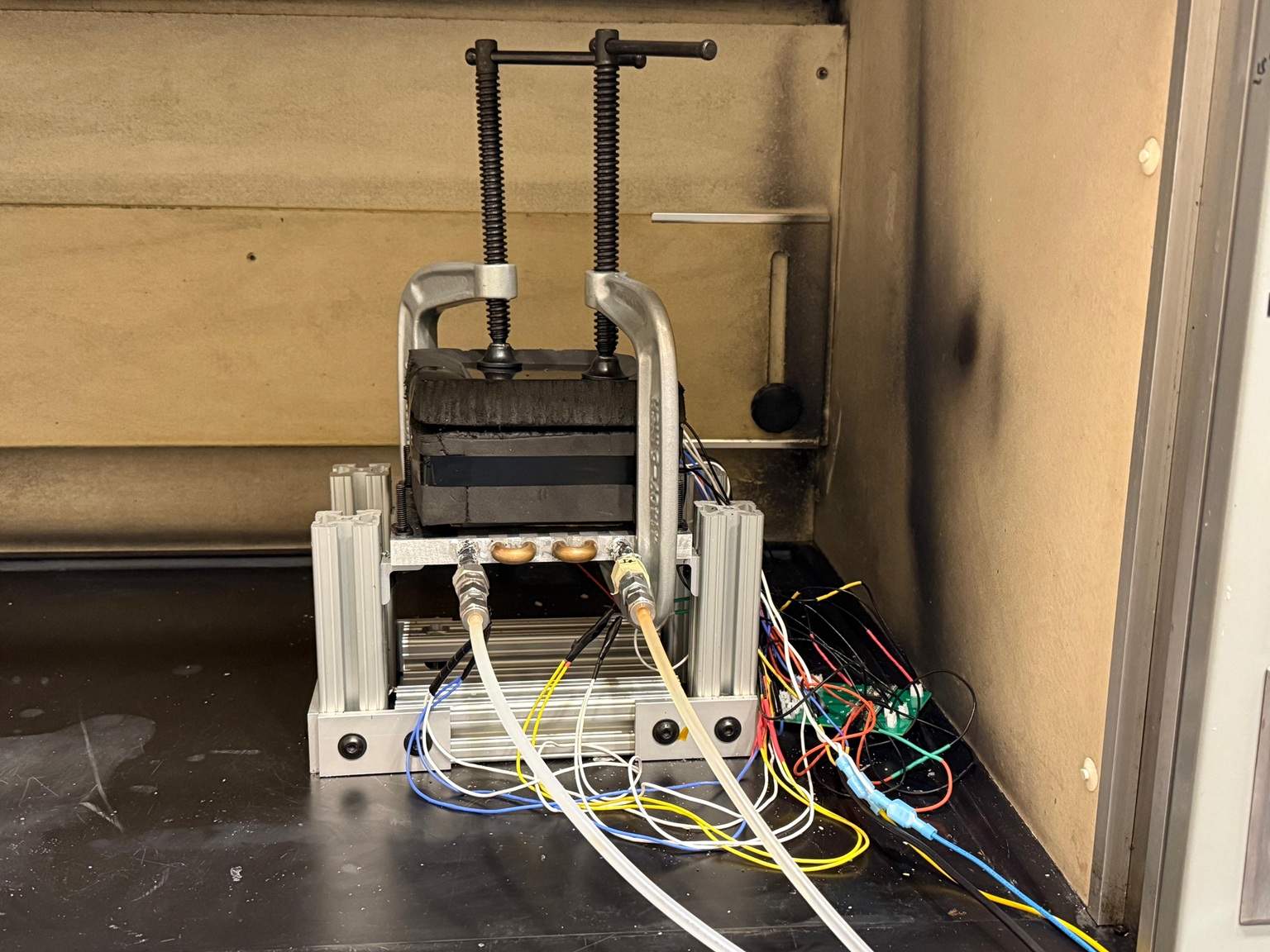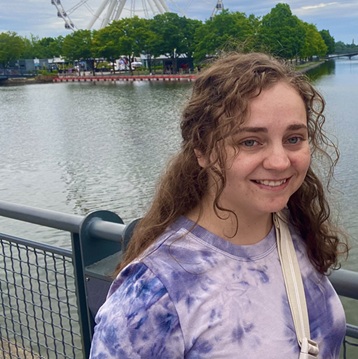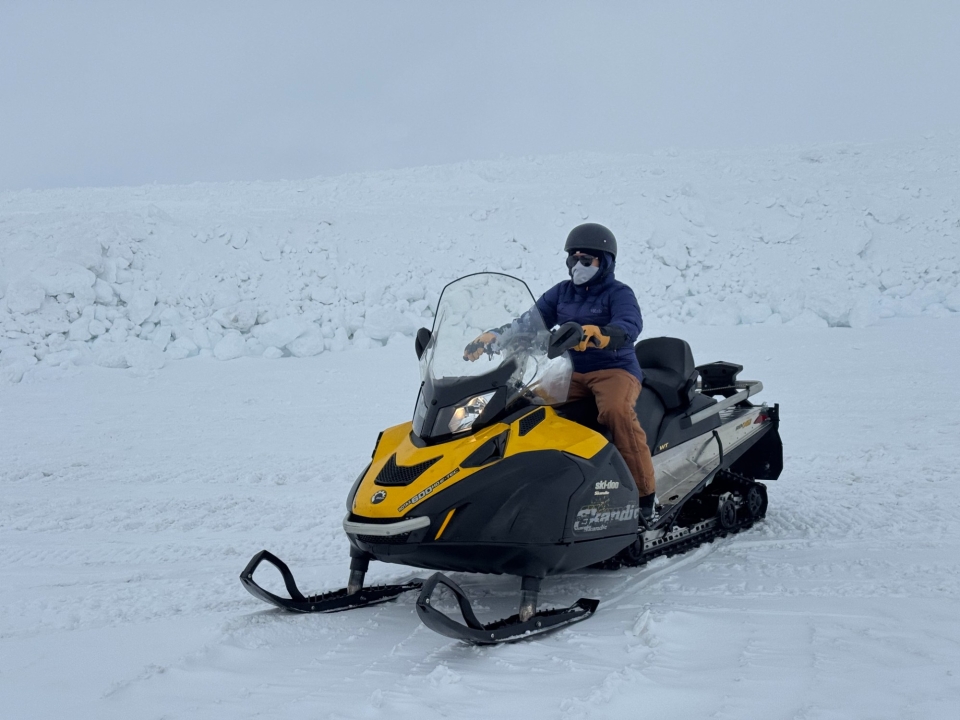- Details
-
Published: Wednesday, September 03 2025 01:40
Will Fox credits his early research experiences with introducing him to the power of plasma, a state of matter that could overhaul the energy sector and demystify astrophysical phenomena like cosmic rays and solar flares.
As an undergraduate researcher at Princeton University, Fox joined the Princeton Plasma Physics Laboratory (PPPL), a U.S. Department of Energy lab where he would later work for 11 years, including most recently as a principal research physicist. There, Fox played an integral role in developing experiments that used lasers to produce extremely hot and dense plasmas in the lab—no space telescope needed. Will Fox. Credit: Sarah Jane White
Will Fox. Credit: Sarah Jane White
Fox was captivated by the many applications of this research, including the potential to unlock fusion as an alternative energy source and advance the scientific community’s understanding of plasma physics at a fundamental level.
“Research on laser-produced plasmas has been going on since the ’60s, and what’s exciting about these experiments is that they’ve come up with clever ways to measure what’s happening in the plasma produced,” Fox said. “In doing these experiments, you get to leverage all those developments that have happened over the years.”
In January 2025, Fox joined the University of Maryland as an assistant professor of physics. He’s refurbishing a lab in the Energy Research Facility, which will include a high-powered laser that allows him to produce plasmas on campus without needing to travel to other institutions. The lab will also feature a vacuum chamber and a control room, allowing researchers and collaborators from other institutions to work in a separate area from the laser.
“The physics department has an excellent group of faculty and a lot of expertise to help you set up a lab,” Fox, who holds a joint appointment in UMD’s Institute for Research in Electronics and Applied Physics, said of what attracted him to UMD.
Magnetically drawn
Despite being the most common state of matter in the universe, plasma is perhaps the least understood. Its free-flowing, negatively charged electrons and positively charged ions make it an efficient conductor of electricity. Its presence on Earth can be seen in lightning strikes, and in space, it contributes to processes such as magnetic reconnection (as seen in solar flares) and collisionless shocks (whose waves propel cosmic rays to nearly the speed of light).
Fox has devoted his career to studying these complex processes and sharing what he’s learned with students. After graduating from Princeton with a bachelor’s degree in physics in 2001, he took a gap year to seize a once-in-a-lifetime opportunity: a math and physics teaching position at a high school in Nepal’s capital through the Princeton in Asia fellowship program. During his year in Kathmandu, Fox spent weekdays in the classroom and weekends in the Himalayas.
“I got into mountain biking and went on hikes,” Fox recalled fondly. “Just being immersed in the culture was exciting, and there was always something new or interesting going on in the city.”
When his fellowship ended, Fox enrolled in MIT’s physics Ph.D. program and focused on magnetic reconnection, a process that occurs in plasma and converts magnetic energy into kinetic energy. This concept is crucial for understanding Earth’s magnetized bubble of plasma, known as a magnetosphere; the aurora phenomena seen near Earth’s poles; and processes related to the sun, including coronal mass ejections and solar flares.
Magnetic reconnection can also cause problems when it occurs spontaneously in fusion devices used to generate energy. To better understand the phenomenon, Fox contributed to experiments that enabled magnetic reconnection to unfold in a controlled setting.
“Reconnection is one way the plasma can break out of the magnetic field that's trying to hold it in place,” Fox explained. “The idea is that by understanding how reconnection works, you can maybe design a better fusion device or understand what you have to do to keep things contained and in control.”
Finding purpose in plasma
After earning his Ph.D. in 2009, Fox spent two years as a research scientist at the University of New Hampshire’s Space Science Center, where he helped develop a program called the Plasma Simulation Code to see how plasma particles would interact with magnetic and electric fields in a virtual environment. Later, at PPPL, he used this same code to study how laser-produced plasmas might replicate astrophysical phenomena.
While Fox enjoyed this modeling work and found that it helps researchers design better experiments, he prefers producing actual plasmas in the lab.
“I still think of myself, ultimately, as an experimental physicist,” Fox said. “At the end of the day, I get excited about seeing a result and real data in a physical experiment.”
After Fox joined the PPPL as a physicist in 2013, he developed experiments with laser-produced plasmas that surpassed temperatures of 30 million degrees Fahrenheit. He also led the first experimental observations of the ion Weibel instability, a process that can spontaneously generate a magnetic field in plasma. Understanding this process can help researchers tackle one of the biggest unanswered questions in his field: how plasmas across the universe generate magnetic fields.
“When we look out at the cosmos, almost all of the plasma that's out there has a magnetic field,” Fox said. “You can look at the polarization of light that’s coming from a galaxy and see that there must be some large magnetic field embedded in the plasma. So overall, it's a question of, ‘Where did this magnetic field come from in the first place?’”
In later studies, Fox used plasma and a static magnetic field to generate collisionless shocks, which are comparable in some ways to the shockwaves that ripple off airplanes flying faster than the speed of sound. He also developed an improved method of measuring magnetic fields in plasma, resulting in a higher degree of accuracy.
In recognition of these discoveries, Fox received two awards from the American Physical Society: a 2019 Thomas H. Stix Award for Outstanding Early Career Contributions to Plasma Physics and a 2020 John Dawson Award for Excellence in Plasma Physics Research.
Fox has published more than 80 research papers throughout his career and is gearing up for many more at UMD. Currently, he is using laser-produced plasmas to take a closer look at magnetic reconnection.
“We are colliding two plasmas with magnetic fields together and then using these techniques to measure how the plasma is behaving, where they're interacting and where the reconnection is happening,” Fox said.
Going forward, Fox plans to collaborate on experiments with Distinguished University Professor of Physics Howard Milchberg, whose lab is also located in the Energy Research Facility and is equipped with a short pulse laser.
“Our vision is that we'll have these cooperative experiments where the laser in my lab will produce the plasma state, and then we can take different types of probe measurements using the short pulse laser,” Fox said. “I’m looking forward to running more experiments and collaborating with the faculty and students here.”
Written by Emily Nunez
 Kartik Srinivasan
Kartik Srinivasan 





